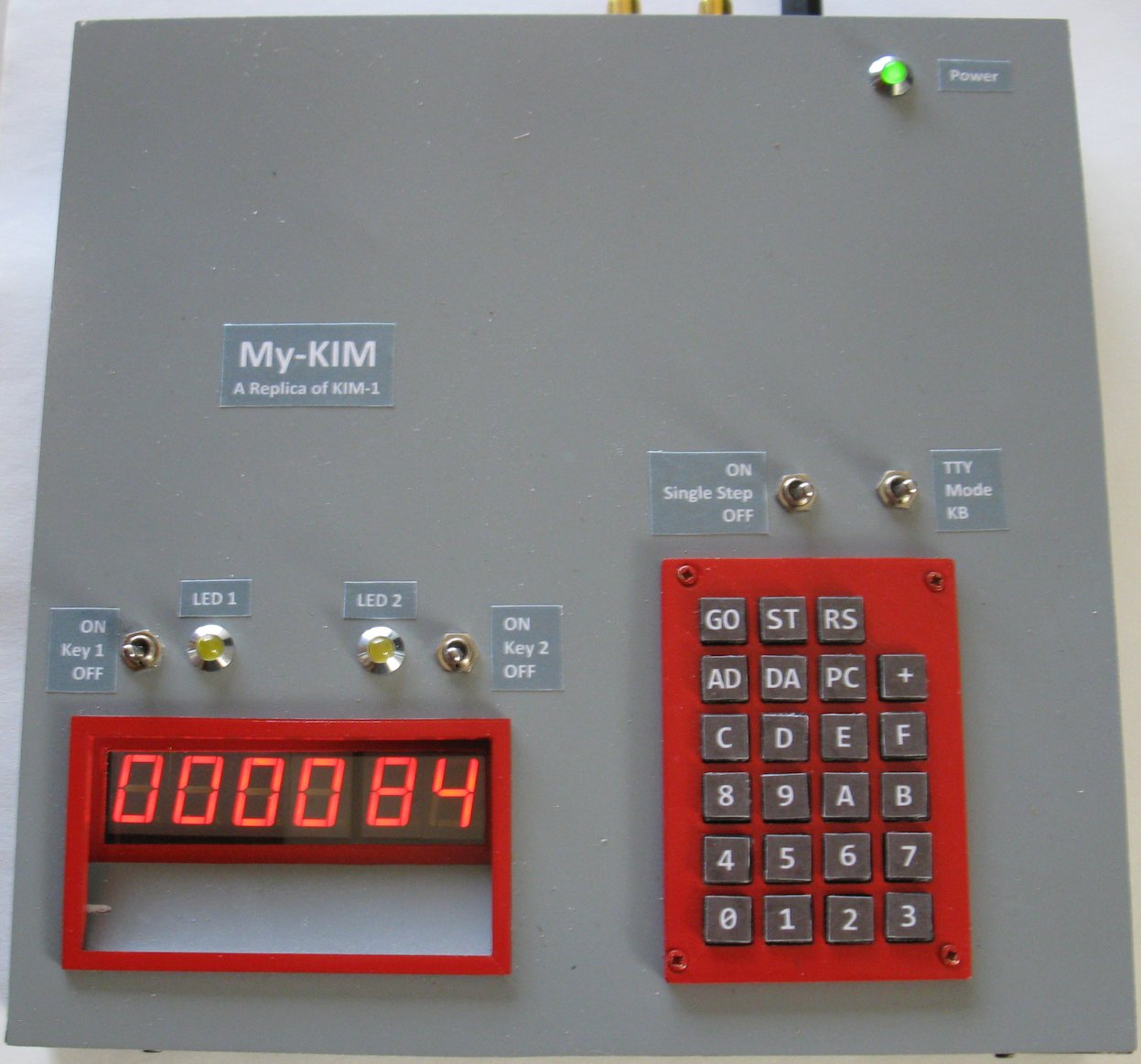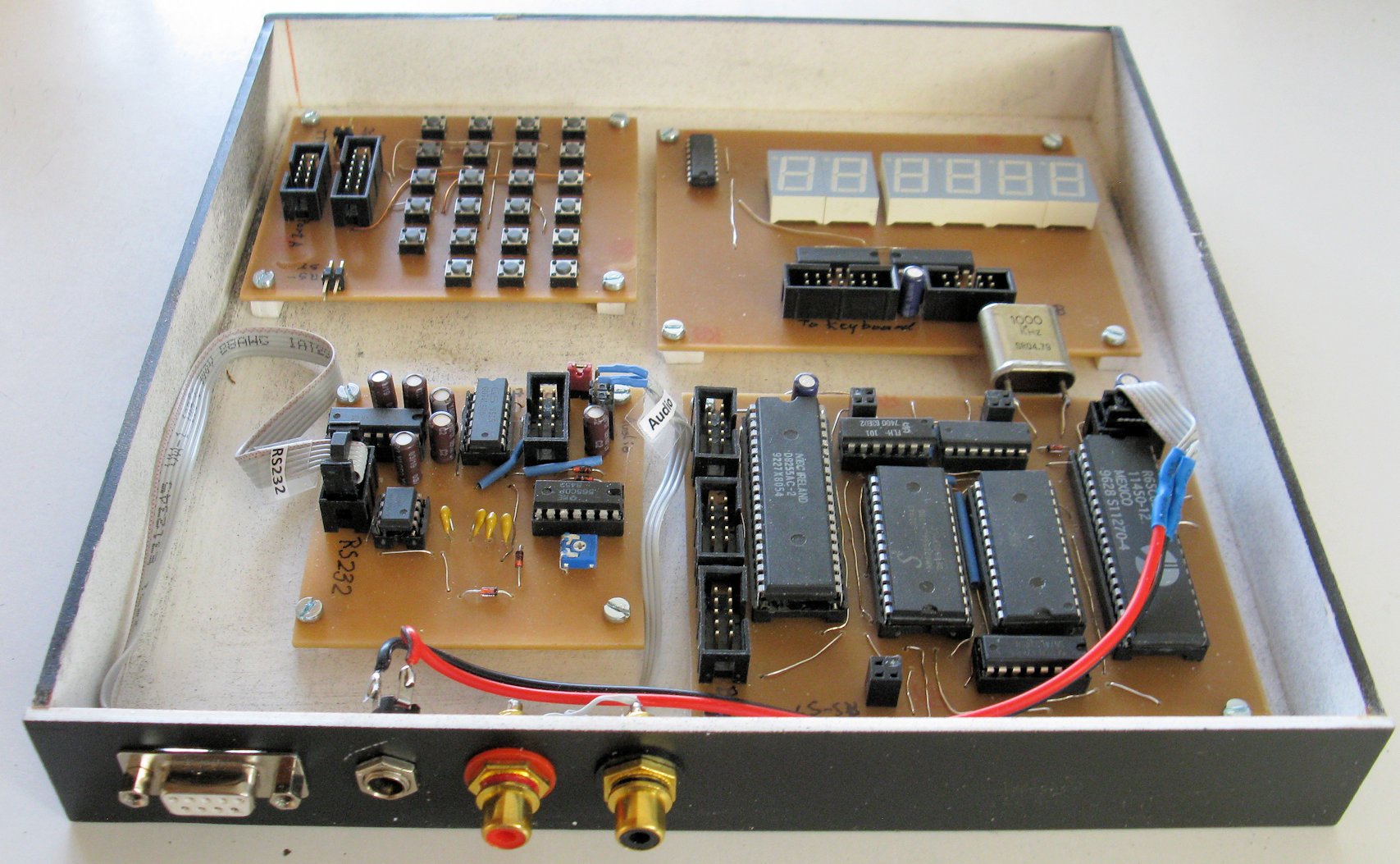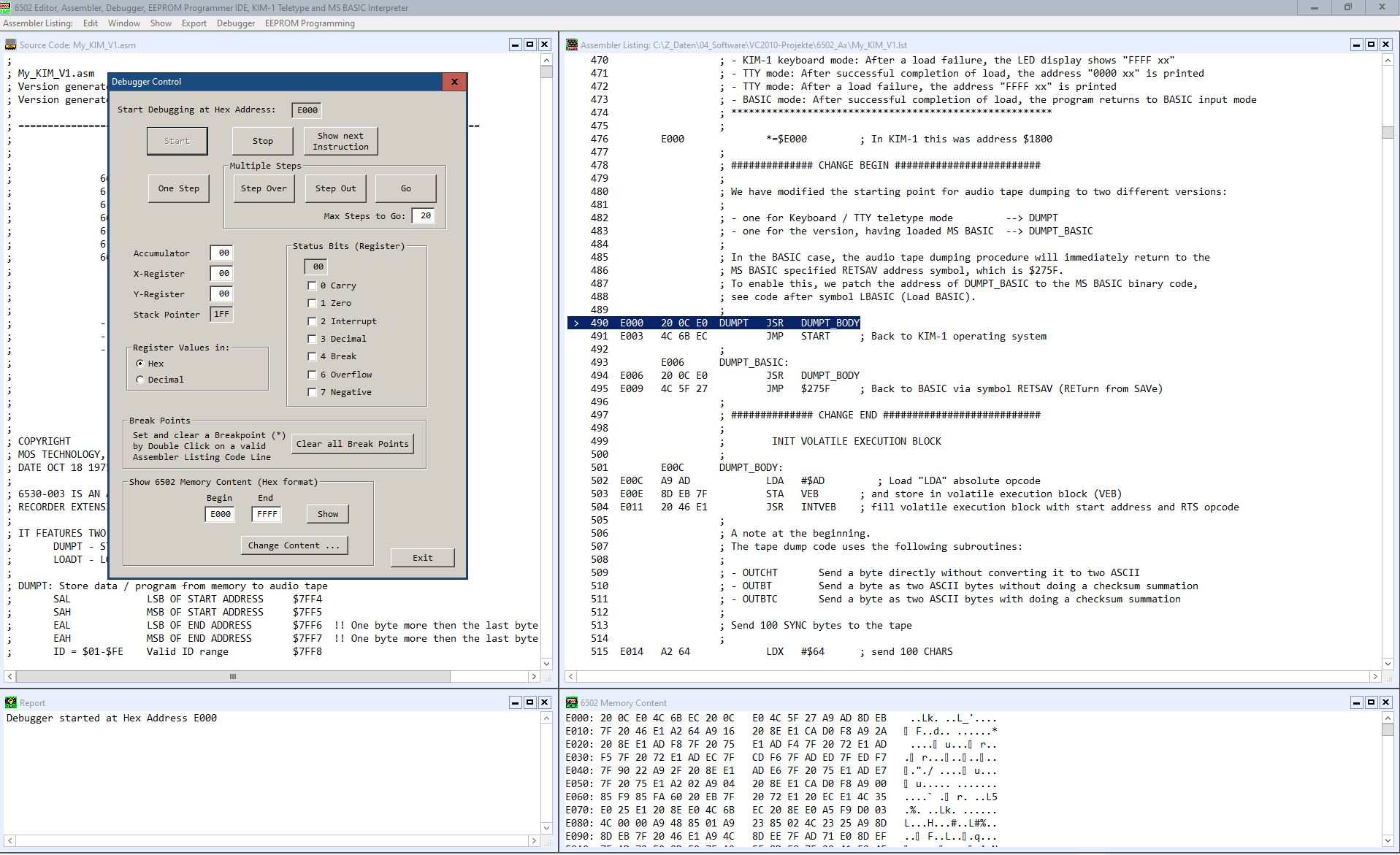On the forum Mikrocontroller.net I found a thread dedicated to a KIM-1 replica with a twist.
Author is Manfred Langemann (manni), this page is published with his permission.



The built My-KIM computer has the following features:
- A complete 6502 Integrated Development Environment (IDE) for writing assembler source code, including editor, assembler, debugger and EEPROM programmer, see screenshot above.
- The hardware comes with a 6502 micro-controller, 8 KByte EEPROM, 32 KByte RAM and an I/O interface based on an Intel 8255 PPI (Programmable Peripheral Interface), offering three 8-bit ports. The audio tape interface is realised by an NE565 PLL and the RS232 serial interface is based on a MAX232 IC
Download here My-KIM – A Replica of the KIM-1 Computer Hardware / Software Documentation
with extensive doumentation of hardware, the circuit diagram and PCB in Eagle format, and software: the adapted KIM-1 monitor source and binary, Microsoft Basic KB9 adapted in source format, an EEPROM programmer and the IDE, for Windows, program.
The IDE
Manfred extended a UNIX like console assembler to a window based 6502 Integrated Development Environment (IDE), offering the following features:
- Loading, editing and saving 6502 assembler source code files
- Assembling the source code and generating Intel Hex files as well as List files
- Debugging the source code including break point definitions
- Showing and editing the total 6502 memory area
- Flashing the binary code to an 8 KByte EEPROM
It shall be mentioned, that the assembler can only be used for the early 6502 processors, but not for the 65C02 successor, having additional instructions not supported by this assembler.
Here the German text of the forum thread.
da Winter, Corona mit sozialen Einschränkungen und Rentnerdasein auf den gleichen Wochentag fielen, habe ich beschlossen, den KIM-1 Single-Board Computer basierend auf dem 6502 Prozessor nachzubauen. Dieses Board hatte ich 1977 gekauft und mit dynamischen RAMs, Tastatur und TV-Monitor sowie Microsoft BASIC aufgemotzt. Damit war ich der einzige an der Uni, der einen eigenen Computer besaß. Die Kommilitonen durften weiterhin mit Lochkarten die CDC-6000 bestücken. Leider ist das Unikat irgendwann auf dem Wertstoffhof gelandet.
Beim Nachbau habe ich soweit wie möglich die gleichen Bauteile verwendet, jedoch mit 32 KByte RAM und 8 KByte EEPROM aufgemöbelt. Darüber habe ich eine Integrated Development Environment (IDE) zum Editieren, Assemblieren und Debuggen von 6502 Assembler Source Code entwickelt, siehe My-KIM-IDE.exe (braucht keine Installation). Mit dieser IDE kann der KIM-1 Nachbau auch im sogenannten TTY Mode betrieben werden (RS232 mit USB Adapter). Außerdem kann Microsoft BASIC in der Version 1.1 aus dem Jahr 1977 (KB9.BIN) geladen werden und die Programme können auf dem PC gespeichert werden.
Das Projekt ist im attached ZIP File vollständig dokumentiert, siehe das 60-seitige My_KIM.pdf Dokument.
